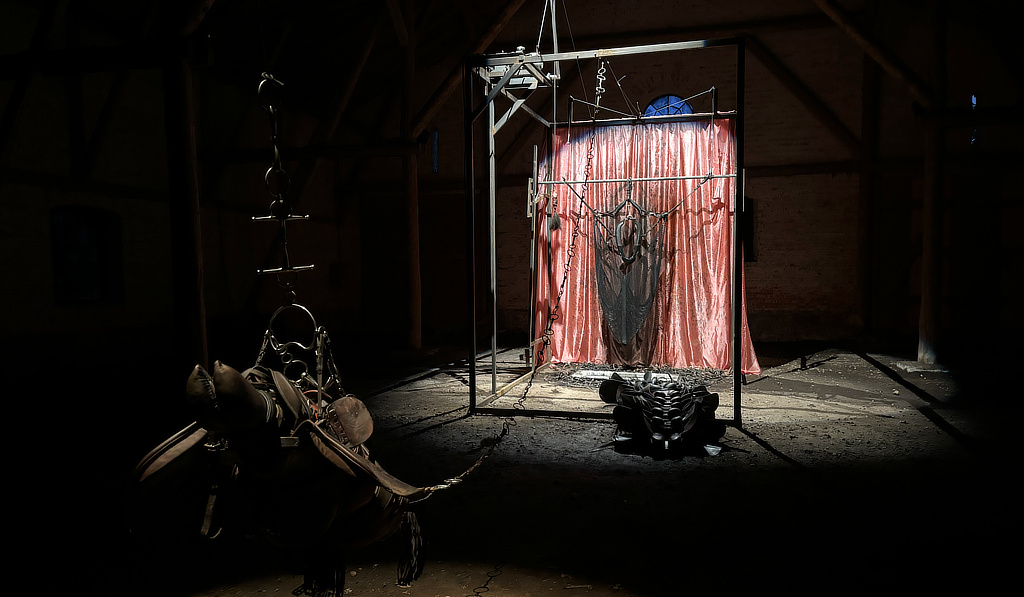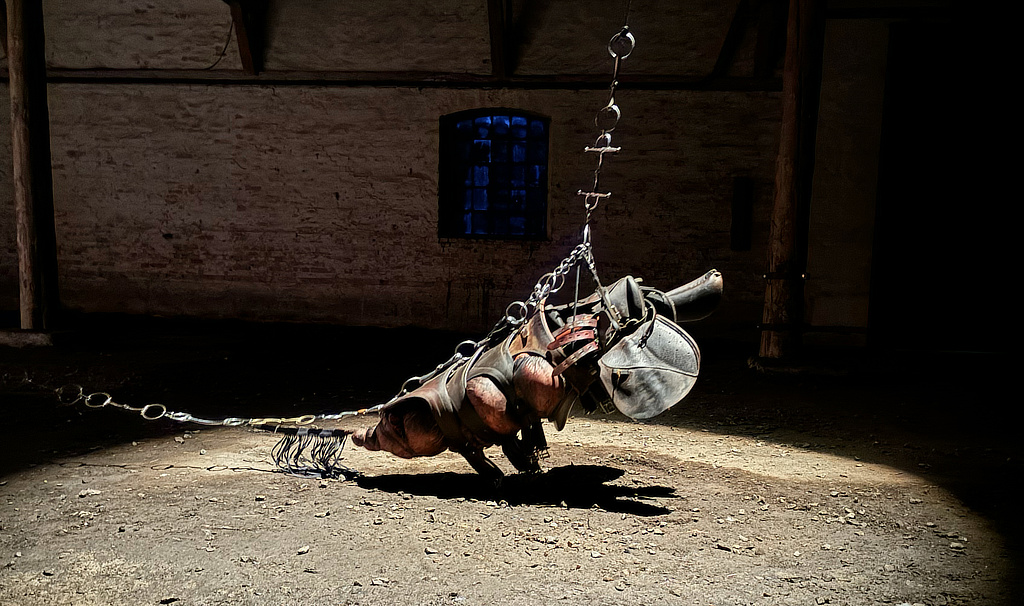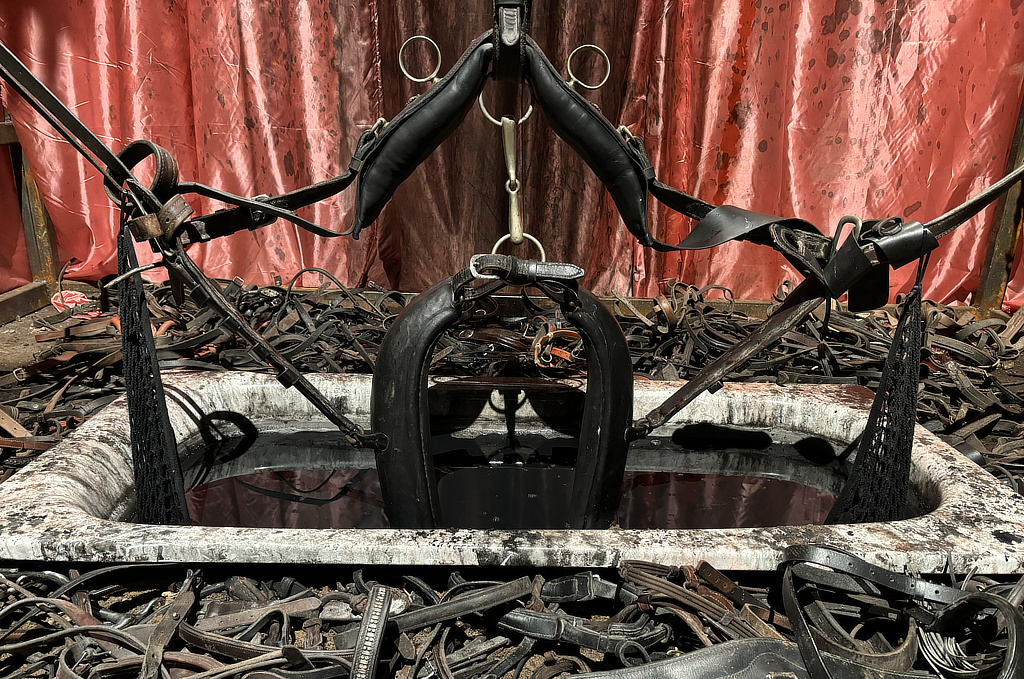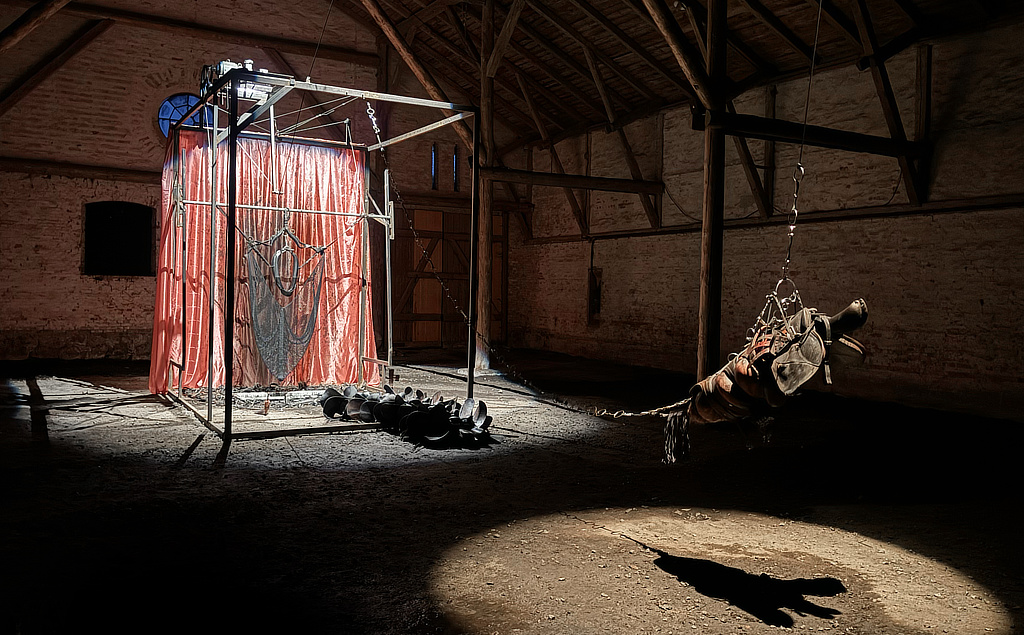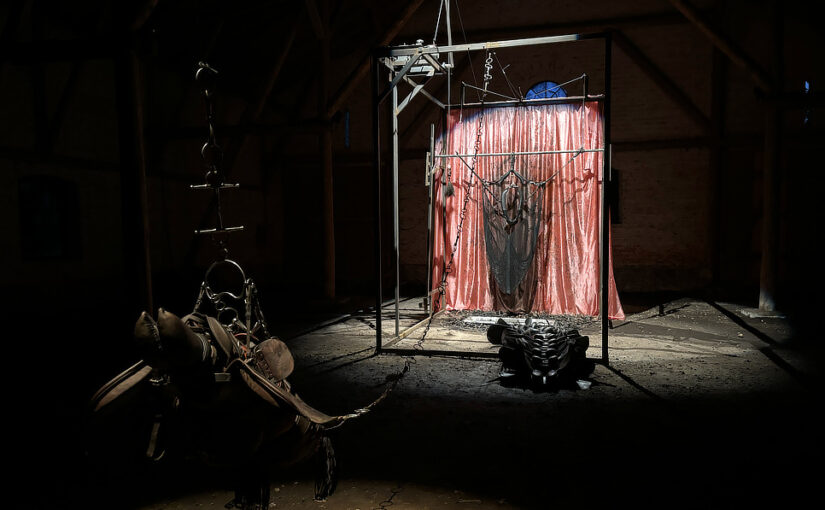Moving installation made up by stable debris, mechanics, textile, metal, water and music, composed by Adele Marcia Kosman.
The site specific installation was made for The show HORSE at Rønnebæksholm (DK). The curator Ida Bencke wrote the following:
Signe Johannessen;s work Holy Mare Infinity is a sculptural installation in Rønnebækholm;s large barn that stages relationships between power, care and control in relationships between horses and people. The work is based on the ways in which people;s needs for intimacy are projected onto horses – needs that translate into situations and relationships made up of both desire and compulsion, of love and violence.
Methods of taming horses – that is, forcing them to approach humans – have historically been aided by harnesses, of leather, metal and textile, all tools for power and dominance. The word mare has the meaning of a mythological female figure. In folklore, the mare figures both as an animal-like creature and as a beautiful woman who haunts men at night. Hence the word nightmare, or the feeling that someone or something is bothering you, as in the saying I had a real mare;. Mare also means sea, and thus draws threads to the water, the liquid and to the deep, which is connected to a special female force that cannot be so easily contained and ruled. Holy Mare Infinity consists of a movable sculptural construction around a horse blanket in dirty water, located in what looks like a drinking trough found in a horse paddock. The blanket signals a need for intimacy, a slightly misunderstood or awkward act of care, because why a blanket on an animal that was created for a life outdoors? In the baroque saddle room, the wet sculpture alternates between a dream-like state and quick, hard bangs as the blanket is thrown against the wall with a movement and sound reminiscent of the whip – a tool frequently used when people try to control horses. Gradually, the dirty water creates an image of the rug on the wall, which becomes darker and darker over the course of the exhibition, and which could resemble a Rorschach pattern or a starfish. The landscape around the sculpture is made up of discarded saddles and harnesses from local stables, stud farms and riding schools, which have been collected by the artist.
